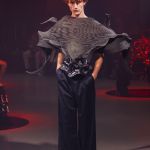
Samuel Ross will also collaborate with Zara
The exodus of fashion creatives to fast fashion continues
October 7th, 2024
After selling his stake in A-Cold-Wall in February to Tomorrow Ltd, Samuel Ross announced that his next partnership will be with Zara, adding Ross to its roster of notable collaborators, the most recent of which was Stefano Pilati, who recently debuted his own collection with the Spanish brand. These deals represent interesting market dynamics: beyond the obvious repositioning that Zara seeks by associating with "high-end" names, there's also the growing trend of designers who have, for one reason or another, been sidelined by the fashion industry, and who are trying to relaunch or open new phases of their careers by collaborating with consumer brands in large distribution. Following his separation from A-Cold-Wall, Samuel Ross spent some time focusing on artistic and consulting projects, such as his work with Beats by Apple, before launching a new menswear line, SR_A, which will now be the centerpiece of a co-branded launch with Zara, offering biannual releases under the name SR_A Engineered by Zara. These agreements reflect Zara's strategy to reach an audience that desires a premium aesthetic while maintaining lower prices. Zara, for its part, is pushing for a rebranding that has brought it into more direct competition with prestigious names like those of the LVMH group, tapping into the mass consumer's desire for exclusive, high-quality pieces at accessible prices. The strategy, basically, moves along the same lines set years ago by NikeLab, which created a line of only collaborations with high-profile creatives to insert itself into a high-end segment from which it was, even reputatively, excluded.
In fact, a regular Zara customer can visit the store to see what's new, knowing that two or three times a year, they might find a more “designer” piece or something a bit different in limited edition, building loyalty. Additionally, collaborations with high-fashion designers, like Clare Waight Keller, who is now the creative director of Uniqlo, help Zara and other fast-fashion giants to elevate their image, blurring the line between luxury and accessible fashion and meeting the expectations of younger customers (which now include thirty-something professionals, not just university students) who find themselves completely excluded from the conventional luxury market due to its absolutely prohibitive prices. Designers like Pilati and Ross undoubtedly have a well-defined and innovative vision that can be extremely appealing to fast fashion consumers looking for something different from the usual “disposable” items. And it’s telling that collaborations today seem to have gone beyond the idea of occasional, limited releases to become a business model where style crossovers represent an ongoing and enduring opportunity. For fast fashion, this kind of operation contributes to redefining the meaning of accessible luxury, offered to a broader audience but with quality standards that reflect, at least in part, the aesthetics and approach of the big names in contemporary design.
Buying something from Zara for the first time in at least a decade due to the Stefano Pilati collaboration. That it's pure wool and not disturbingly cheap defs part of it. This suit: pic.twitter.com/VYMvHPwgdN
— Will Absolute Shower (@ShowerAbsolute) October 4, 2024
These partnerships not only represent an advantage for fast-fashion brands but also reflect an interesting phenomenon: the recovery of creatives who, due to the growing competitiveness and selectivity of the luxury sector, have found themselves excluded or relegated to its margins. Samuel Ross gained great fame during the era of Virgil Abloh, of whom he was a “disciple,” but the implosion of the streetwear bubble following the designer’s death pushed him and A-Cold-Wall away from the fashion epicenter; and so it was for Clare Waight Keller, who, after her few years at Givenchy, was let go due to low sales, and the same happened with Stefano Pilati, who, apart from his small personal project Random Identities, has not collaborated with a major brand since 2016 except for sporadic appearances in institutional fashionlike his work with Fendi and his appearance at the Louis Vuitton show. With the rise of new market priorities, many designers, though with undeniable style and creativity, have found it challenging to maintain a stable place in luxury, a sector where innovation goes hand in hand with extremely variable demand. For fast-fashion brands, collaborating with these designers represents an opportunity to differentiate themselves from the competition while also offering a platform to creatives who have brought their vision to the luxury world but who may have lost relevance in such an unstable context.





















































